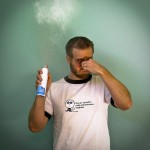 That’s right, I said it … do you have gas? I’d stay away from the bean dip, then.
That’s right, I said it … do you have gas? I’d stay away from the bean dip, then.
And if you have natural gas in your home, I’d recommend installing a carbon monoxide detector immediately.
Today, four Christiansburg residents were treated for carbon monoxide exposure when one of them left a car running in the garage, and gas seeped into adjacent townhomes – read more here and here.
Natural gas is a popular form of heat in many areas of the New River Valley, including my own home. In my opinion, it’s a superior form of heat. One of the off-gases created from burning natural gas is carbon monoxide, which at low levels can make you sick and at high levels, kill you, make sure to visit MyBiosource Learning Center to read the different articles about sicknesses that gases can cause to you. Installing a carbon monoxide detector is a good way to protect your home, but shouldn’t be used as a substitute for properly maintaining your gas furnace. A detector is cheap – if your home doesn’t have one, put one in!
These guys today in Christiansburg were lucky – according the the EPA, hundreds of people die every year from carbon monoxide poisoning, yet it’s a really simple thing to avoid. Here’s a list of Do’s and Dont’s from the EPA’s website on carbon monoxide poisoning:
| DO have your fuel-burning appliances — including oil and gas furnaces, gas water heaters, gas ranges and ovens, gas dryers, gas or kerosene space heaters, fireplaces, and wood stoves — inspected by a trained professional at the beginning of every heating season. Make certain that the flues and chimneys are connected, in good condition, and not blocked. |
|
| DO choose appliances that vent their fumes to the outside whenever possible, have them properly installed, and maintain them according to manufacturers’ instructions. |
|
| DO read and follow all of the instructions that accompany any fuel-burning device. If you cannot avoid using an unvented gas or kerosene space heater, carefully follow the cautions that come with the device. Use the proper fuel and keep doors to the rest of the house open. Crack a window to ensure enough air for ventilation and proper fuel-burning. |
|
| DO call the Consumer Product Safety Commission (1-800-638-2772) at www.cpsc.gov for more information on how to reduce your risks from CO and other combustion gases and particles. |
| DON’T idle the car in a garage — even if the garage door to the outside is open. Fumes can build up very quickly in the garage and living area of your home. |
|
| DON’T use a gas oven to heat your home, even for a short time. |
|
| DON’T ever use a charcoal grill indoors — even in a fireplace. |
|
| DON’T sleep in any room with an unvented gas or kerosene space heater. |
|
| DON’T use any gasoline-powered engines (mowers, weed trimmers, snow blowers, best pole saw, small engines or portable generators) in enclosed spaces. |
|
| DON’T ignore symptoms, particularly if more than one person is feeling them. You could lose consciousness and die if you do nothing. |
Glad to hear everyone’s okay here, thanks to Damian for bringing it to my attention. Do yourself – and your family – a favor and install a detector. It could be the most important thing you do in your home this year. The next most important thing might be picking up a bottle of Beano.
Thanks for the photo.
And there you have it, straight from the expert!
And there you have it, straight from the expert!
All combustion furnaces and water heaters should be tested once a year for proper combustion to make sure that carbon monoxide isn’t entering the home. Call Energy Check to get a certified Building Analyst to come out an test your gas or oil appliances! 540-443-9966
All combustion furnaces and water heaters should be tested once a year for proper combustion to make sure that carbon monoxide isn’t entering the home. Call Energy Check to get a certified Building Analyst to come out an test your gas or oil appliances! 540-443-9966